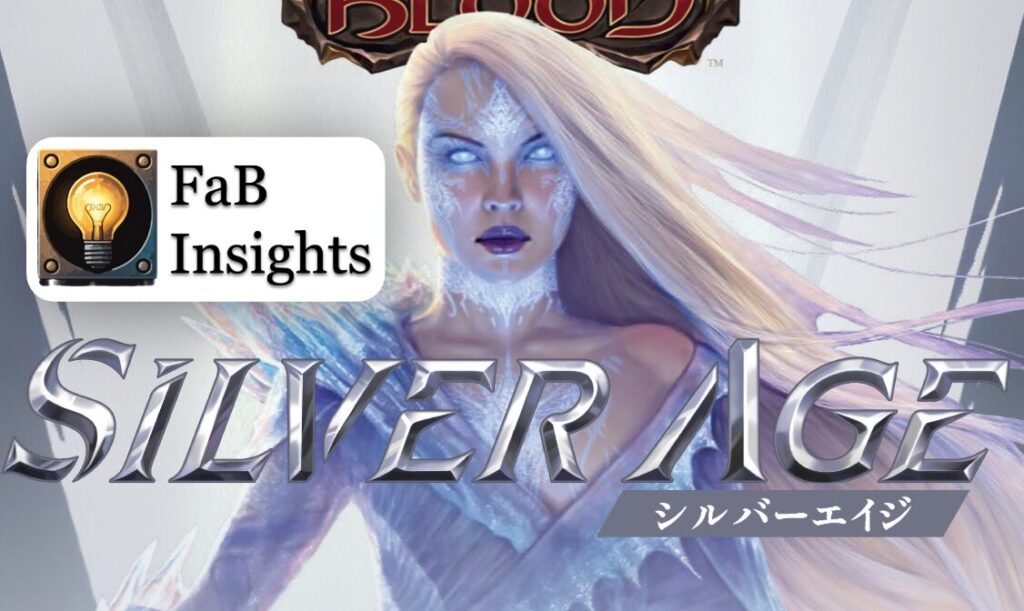Flesh and Blood just got a fresh, exciting twist with the introduction of Silver Age, a brand-new format designed to be fast, fun, and wallet-friendly. In this format, players build decks using only common, rare, and basic cards, featuring the iconic roster of young heroes. Whether you’re a casual player looking for friendly games or a competitor chasing World Tour points, Silver Age promises thrilling gameplay for everyone.
The format encourages affordable deckbuilding, fast-paced matches, and accessibility for new players, making it a playground where innovation, strategy, and fun all intersect. It’s been 4 days now that the format has been playable on our favourite testing platform Talishar, and we already have interesting data on how players are approaching Silver Age, which heroes are popular, and how they are performing in their early games.
Popularity
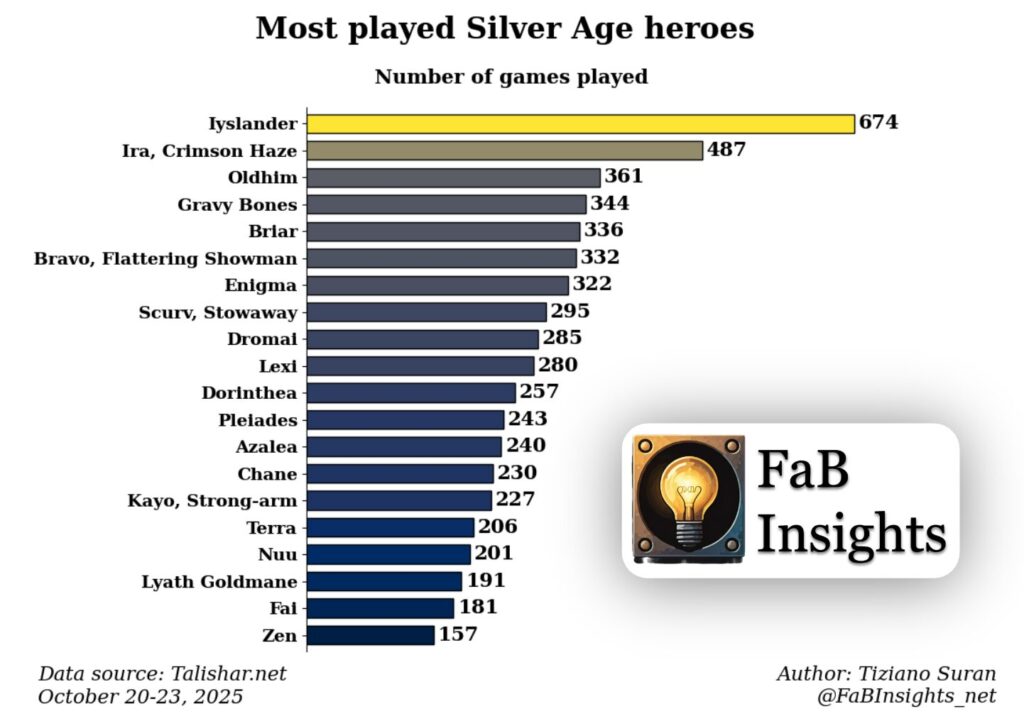
Early data shows which heroes are attracting attention in the first few days of Silver Age. These heroes are the ones players gravitate toward, whether because of perceived strength, familiarity, or simply personal preference. It is clear that players were looking forward to playing again one of their favourite ice wizards Iyslander, followed by Ira and taking together the predominant spots in terms of popularity. But how are these heroes performing?
Performance
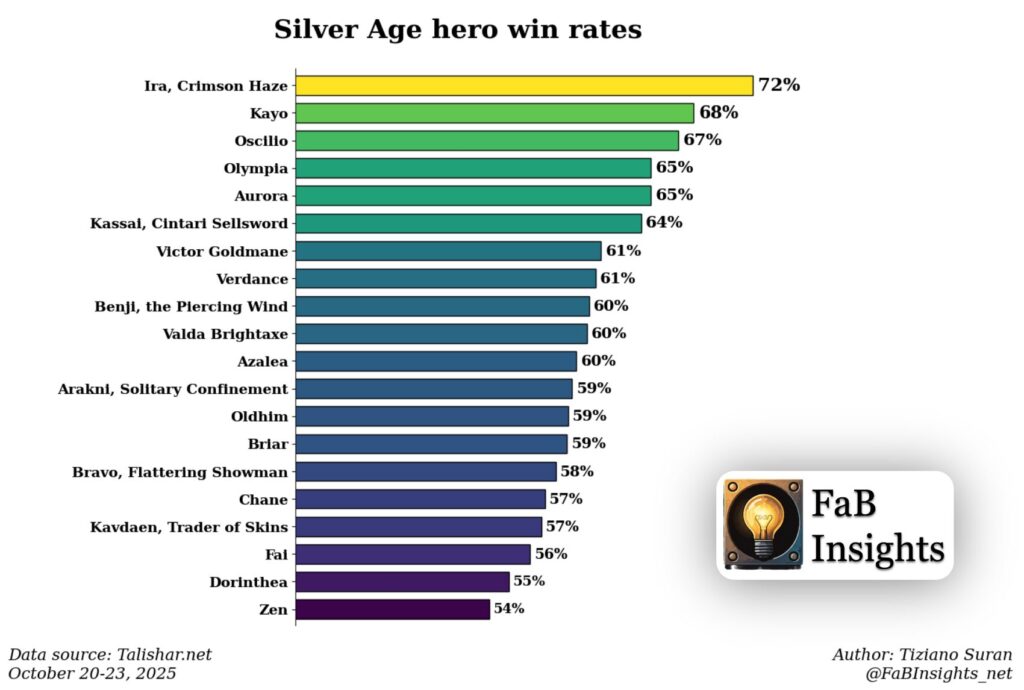
Win rates provide a snapshot of which heroes are performing well in the initial wave of Silver Age tournaments. Even in a small sample size of 6000 games, some trends are already emerging, hinting at which decks might be strong in this early meta. Ira shows both lots of play and an excellent performance. This suggests the presence of strength and simplicity to be mastered by more players. Curiously, we also see an otherwise less competitive Olympia (at least in CC) taking the fourth spot. Will Silver Age give him the space to shine?
Popularity vs Performance
A scatterplot combining pick rates vs win rates allows us to identify which heroes are currently “overhyped”, i.e., winning less compared to their popularity (bottom right) – like Iyslander and Gravy – and which are performing better that expected (top left) – in primis Olympia, Aurora, Kayo and Victor Goldmane. I guess such discrepancies may be due to some heroes having performed really well (or poorly) in other formats, thus raising (lowering) people’s expectations.
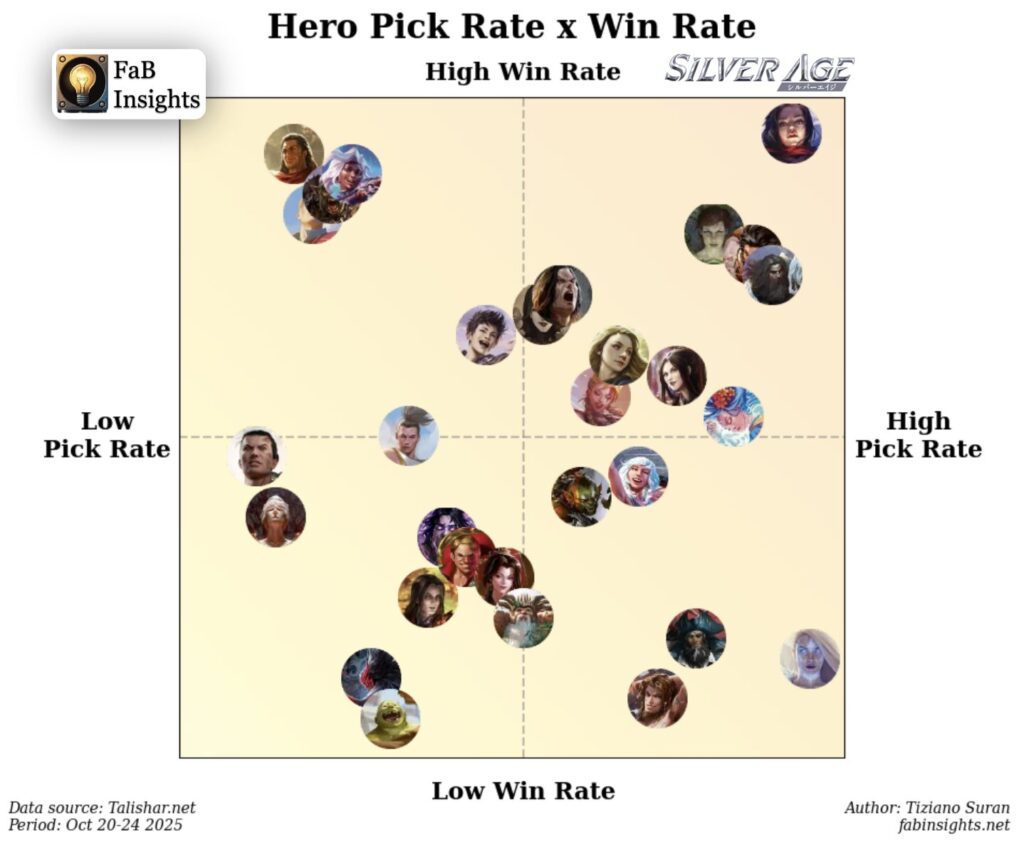
Matchups
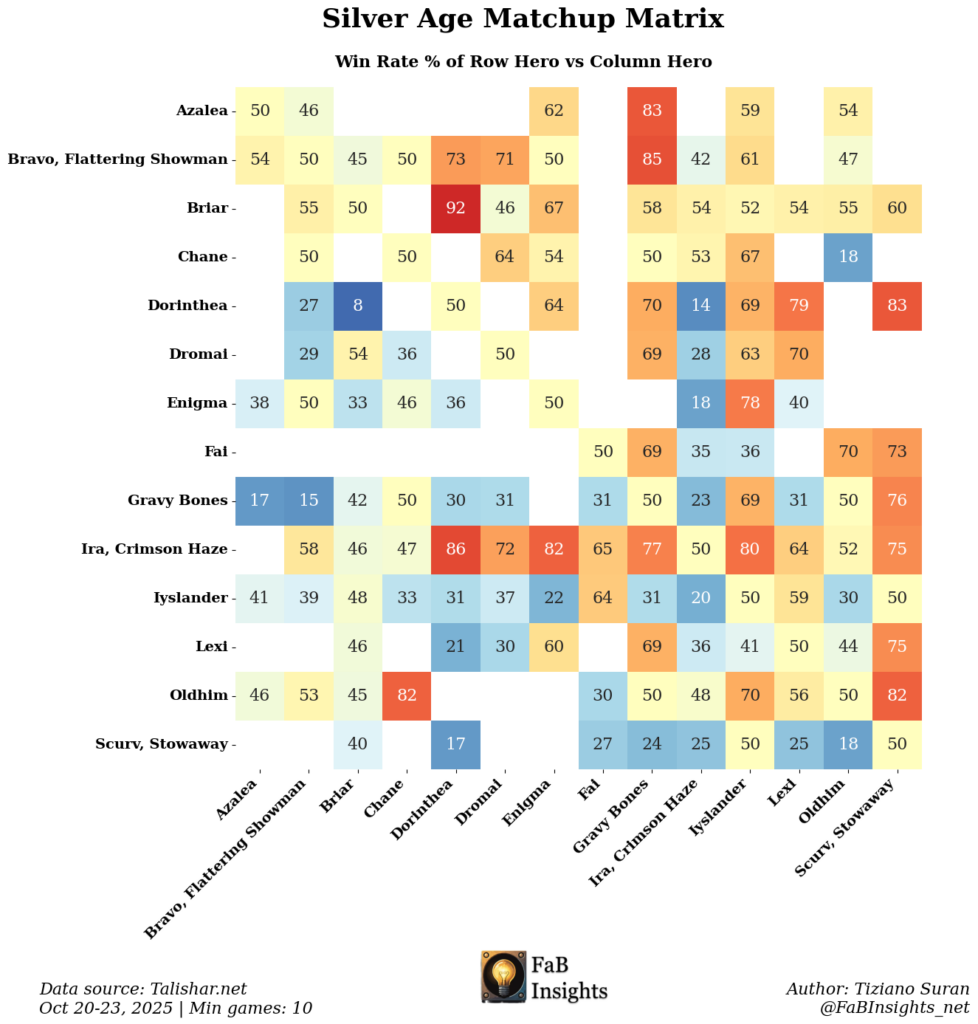
The matchup matrix gives a deeper view of hero interactions. Here I present the win rates where there have been at least 10 games between each pair of heroes in order to show less noise. Of course the picture may and will change once players come up with new strategies and more data comes in, but some expected patterns are already showing.
Conclusion
Even in these early days, a few patterns are emerging, like popularity which doesn’t always equal dominance. Additionally some otherwise underplayed heroes are showing surprisingly strong performance and may be potential hidden gems for players willing to experiment. As more data accumulates, we’ll be able to better understand how the meta develops, which heroes rise to the top, and which decks become the defining strategies of Silver Age.
A personal note
The announcement of the new format got me super excited. As mentioned during the 6th Anniversary Dev Talk, it felt like all my old card collections, quietly gathering dust, were suddenly brought back to life. I quickly jumped into building decks to test with friends and to play again one of my favorite heroes – who unfortunately went into LL recently. I won’t say who, but I can hint: she shoots arrows that are sometimes tricky to block with more than one card from hand.
Finally, allow me to say a big thanks on behalf of the community to the wonderful people behind Talishar for adding the format so quickly and letting us enjoy these first moments of testing Silver Age in preparation for live play and competition.
Hoping to see many of you in Valencia!
Cheers,
Tiziano

